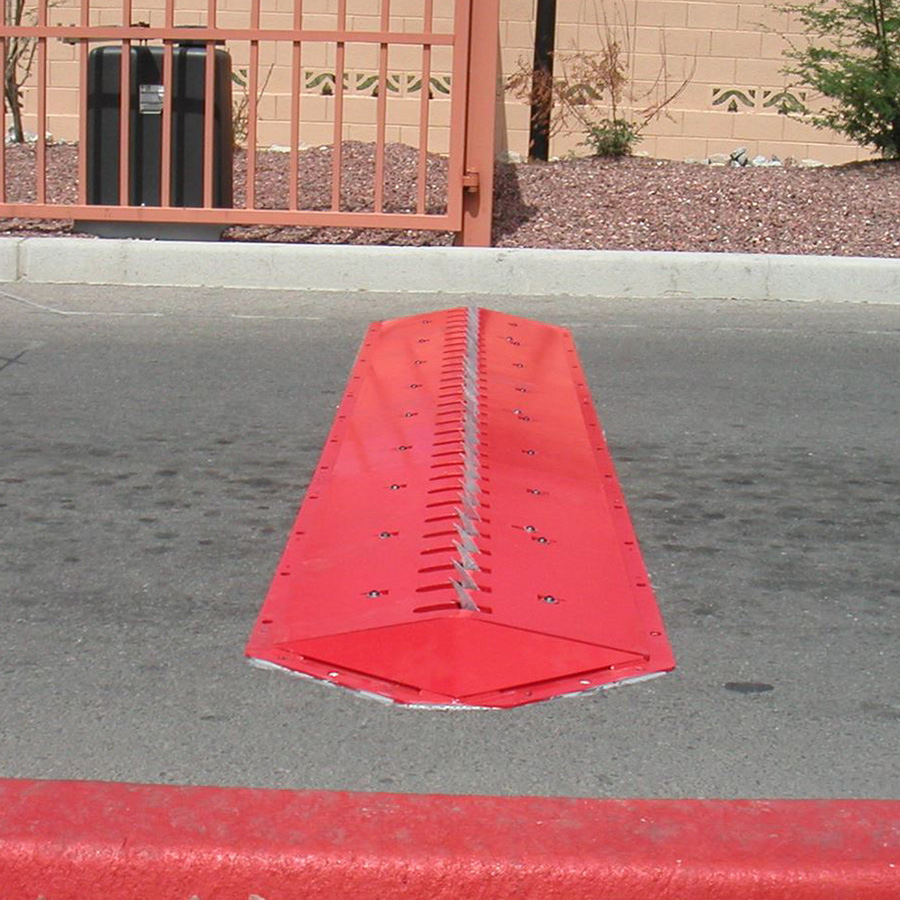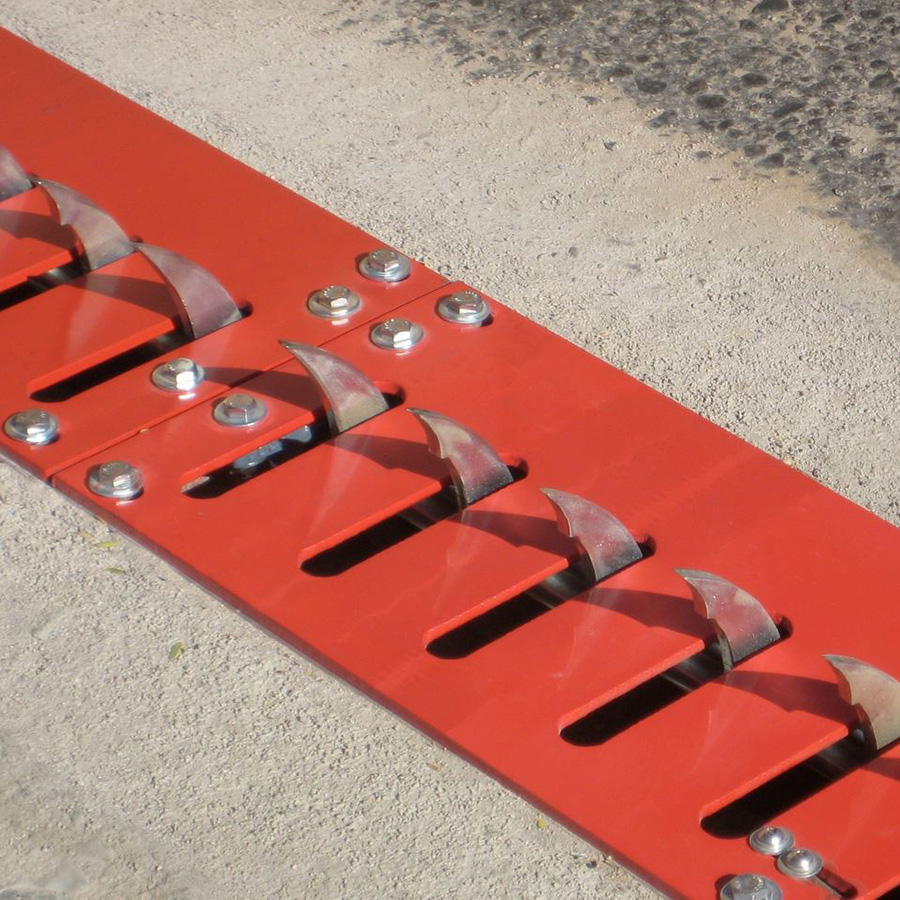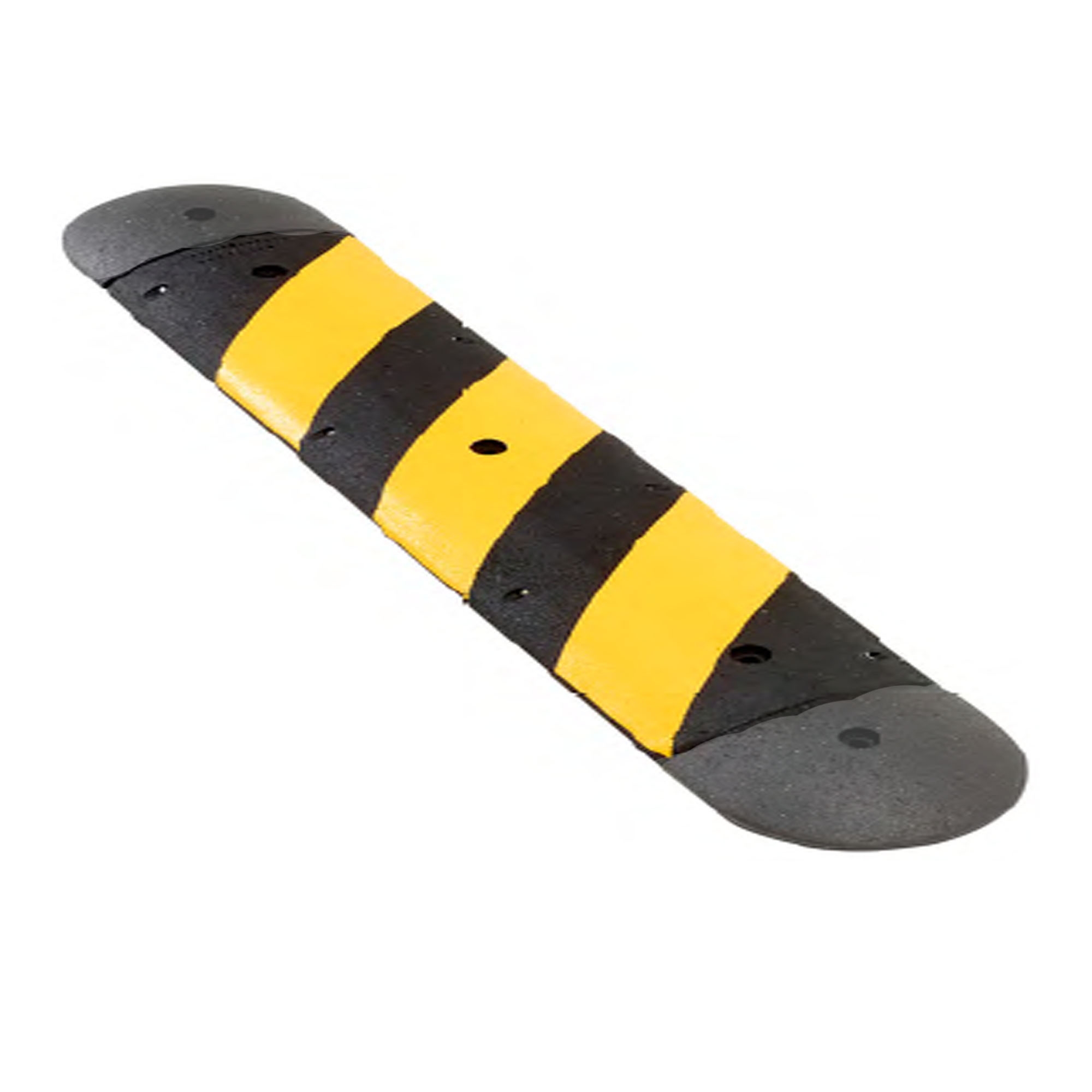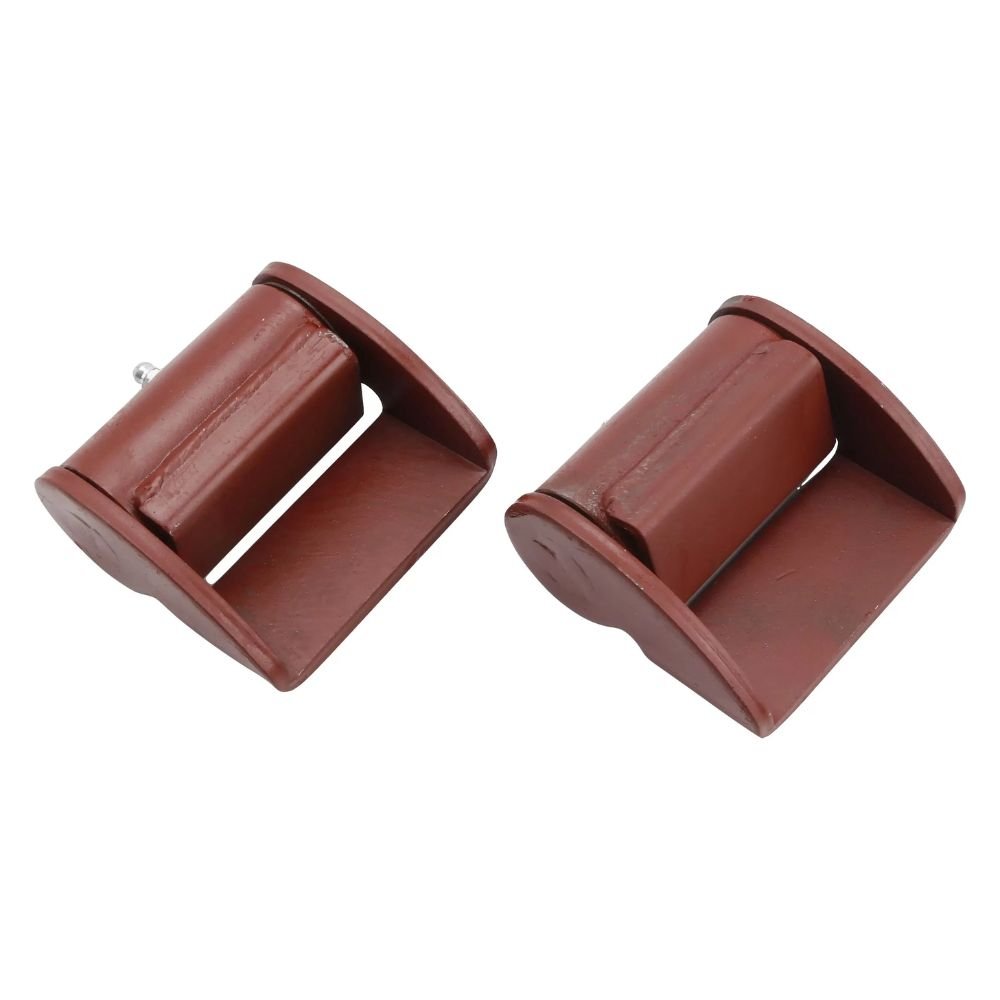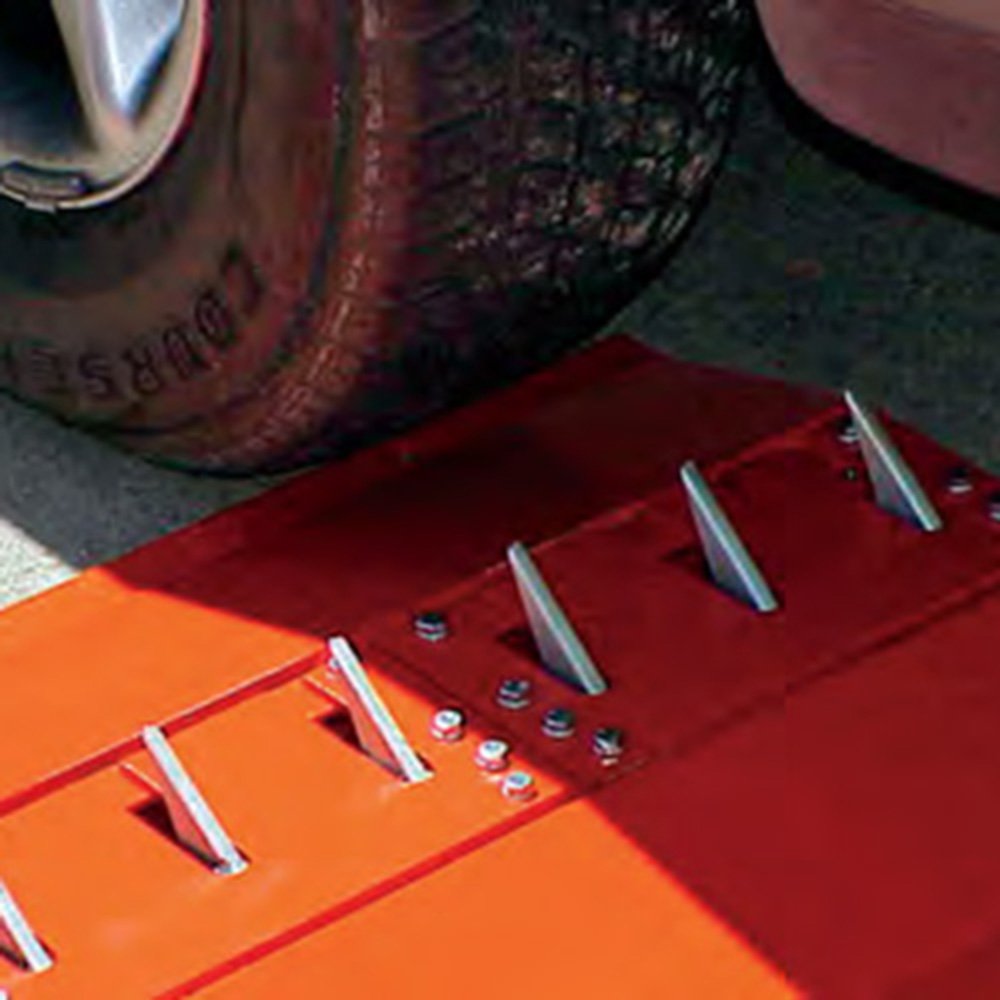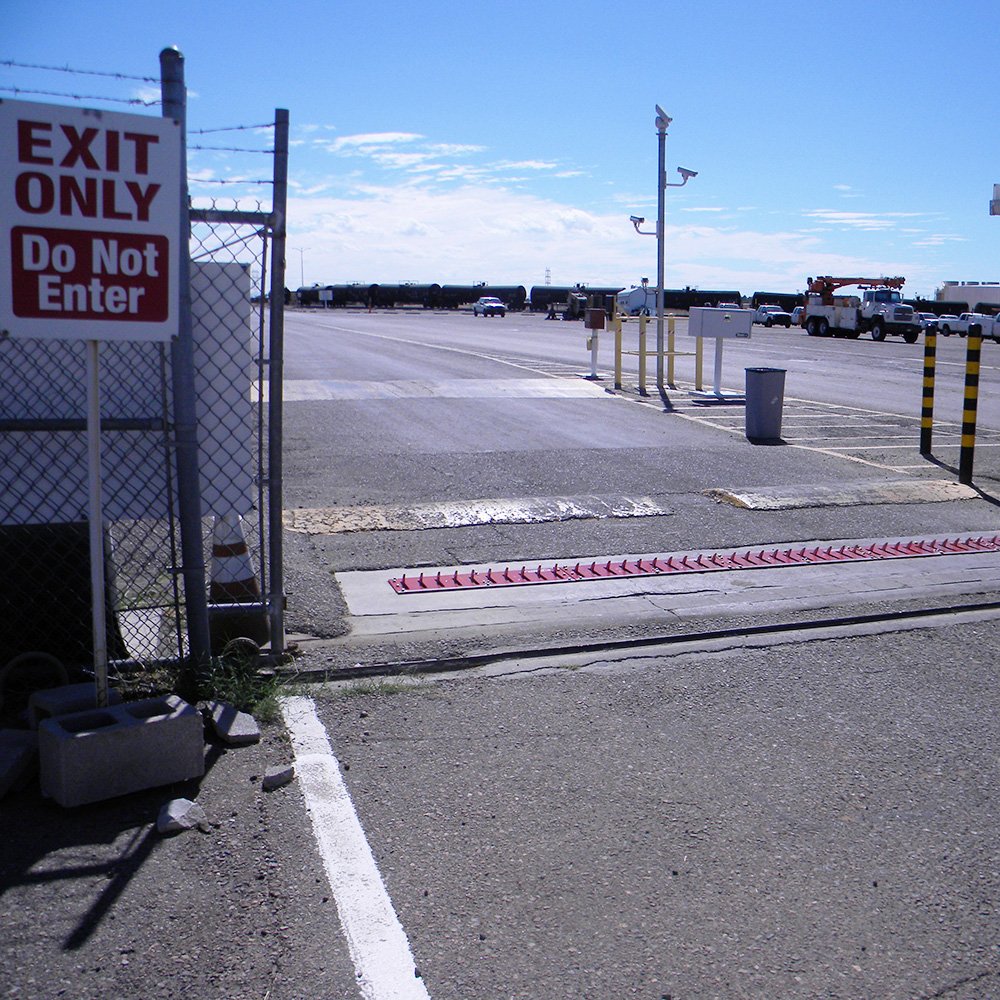Can I Drive Over Traffic Spikes?
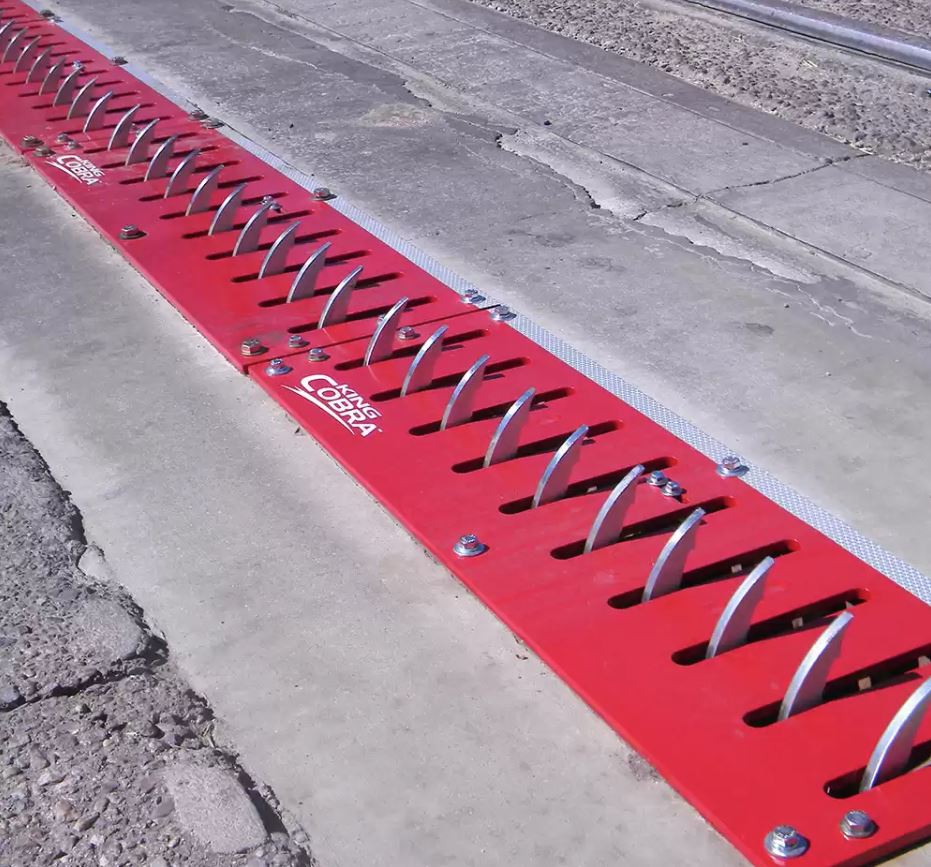
The answer to this question is both yes and no. Traffic spikes are often installed in areas that are looking to prevent theft, elevate security, and guide traffic in a certain direction. Places you will commonly see these traffic spike strips installed would be car rental lots, airports, city government buildings, and apartment complexes. Often, these places allow you to drive around but do not want you to go to certain areas or reenter where you left. That is where the traffic spikes come in.
What do Traffic Spikes do when they are up?
When the spikes are engaged this will prevent vehicles from entering the area you have installed but will allow people the ability to leave the area without damaging their tires. This is possible due to the unique design of the traffic spikes. Most traffic spike sections are designed with spikes that are slightly curved. This allows the sharp part of the spike to only affect one direction of traffic, while the other side is curved enabling a car to pass over it with zero damage. Though vehicles are capable of driving over the spiked section in a certain direction, drivers should exercise caution when they do go over the strip. If a car were to speed over the spikes, even on the curved side, serious damage could result to the tires. To ensure safe passage, vehicles passing over the traffic spikes should not exceed 5 miles an hour.
Having said that, there are certain models of traffic spikes that do prevent traffic from driving through an area from either direction when the spikes are engaged. Unlike the traffic spike model previously explained, this model does not have spikes that are curved. Instead, this style of traffic spike section has teeth that point straight up when activated and will deflate a vehicle’s tires if they enter or exit the area. When wanting open access to the space where the spikes have been installed the teeth of the unit can be retracted into the unit. This will change the section into more of a speed bump and allow cars to pass from either direction.
Additional Considerations for Traffic Spike Systems
When installing traffic spikes, it’s important to consider the environment and specific use case. For example, in high-traffic areas such as airports or government buildings, spikes with durable materials and weather-resistant designs are essential for long-term reliability. Additionally, signage should be prominently displayed to warn drivers of the presence of traffic spikes, reducing the risk of accidents or tire damage caused by unfamiliarity with the system. Some advanced traffic spike models include automated systems that integrate with security protocols. For instance, these systems can be synchronized with entry gates or barriers, activating only when unauthorized vehicles attempt access. This added functionality enhances security while maintaining efficient traffic flow for authorized personnel.
Another crucial factor is regular maintenance. Over time, dirt, debris, and weather exposure can affect the performance of traffic spikes. Routine inspections and cleaning will help ensure that the spikes remain effective and safe for use. Additionally, lubricating moving parts and checking for wear and tear can prolong the life of the system and prevent costly repairs or replacements.
Choosing the Right Traffic Spike for Your Needs
Before purchasing and installing traffic spikes, evaluate the specific requirements of your property. Factors such as expected traffic volume, directionality needs, and weather conditions should influence your decision. Consulting with a professional installer or supplier can help you determine which model will best suit your application and ensure a seamless installation process. Whether you need to enhance security, manage traffic flow, or control access, traffic spikes are a versatile solution. With proper selection, installation, and maintenance, these systems can provide peace of mind and effective traffic management for years to come. Check out some of our options below to see what's right for you!
Contact Us
If you would like to learn more about parking and roadway safety solutions and vehicle and pedestrian traffic management, please feel free to explore our Resources Hub for informational and instructional content or contact our exert team of sales representatives. We are happy to help in any way they can!

